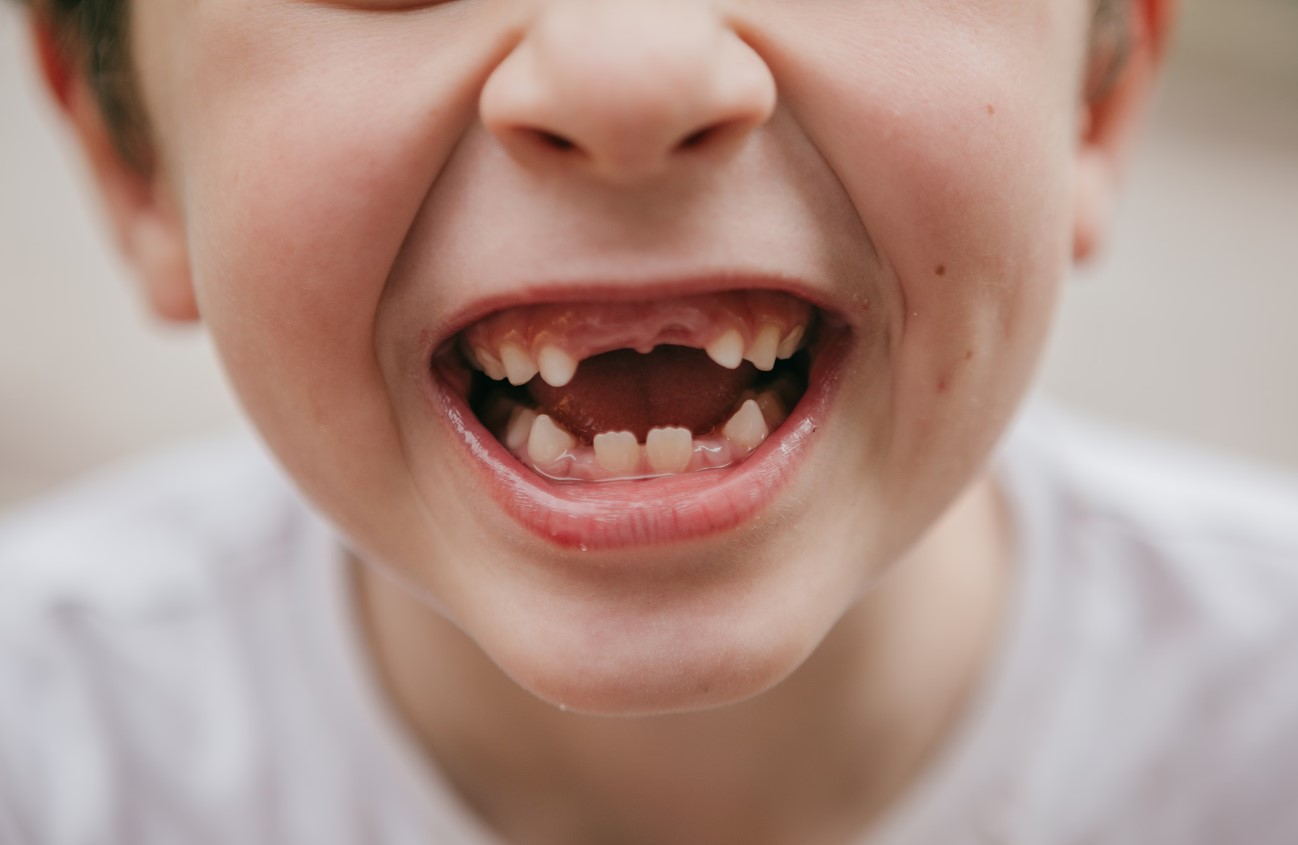Watching your baby’s first teeth come in is an exciting milestone, but it can also bring a mix of joy and challenges. From the first smile to soothing teething discomfort, understanding when and how baby teeth emerge is crucial for any parent.
This guide will walk you through baby teeth eruption charts, timelines, and expert tips to ensure you’re well-prepared for every stage.
An Overview

| Tooth Type | Lower Jaw Eruption (Months) | Upper Jaw Eruption (Months) |
|---|---|---|
| Central Incisors (Middle front teeth) | 6-10 | 8-12 |
| Lateral Incisors (Teeth next to central incisors) | 10-16 | 9-13 |
| First Molars (Back teeth) | 14-18 | 13-19 |
| Canines (Pointed teeth) | 17-23 | 16-22 |
| Second Molars (Backmost teeth) | 23-31 | 25-33 |
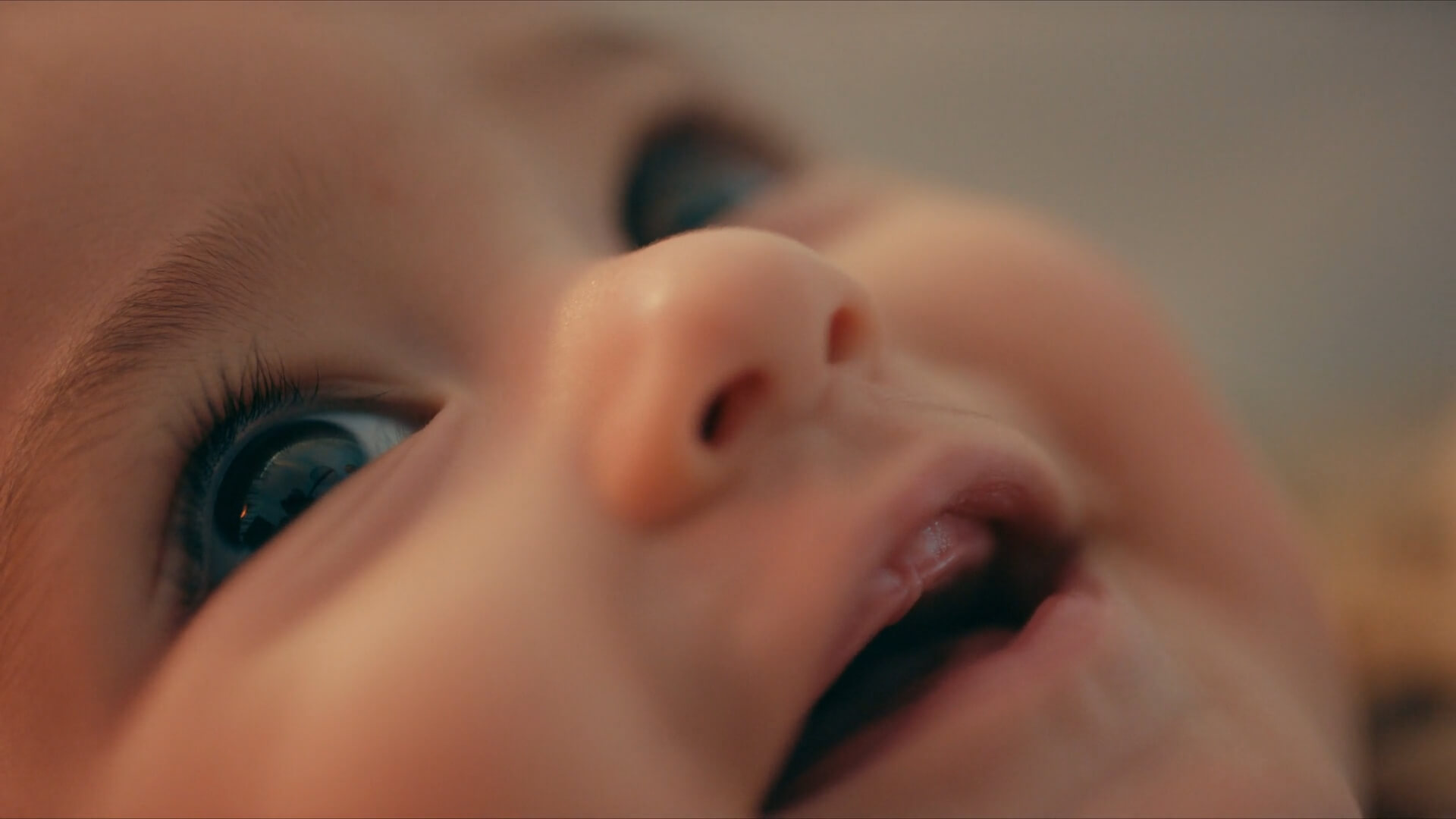
Lower Central Incisors
The lower central incisors are the first teeth to emerge in most babies. These teeth are located in the lower front part of the mouth and are usually the first visible sign of teething.
- Appearance: Lower central incisors are the first to emerge.
- Timing: Usually between 6 to 10 months.
- Function: Primarily used for biting and nibbling on soft foods.
Important Care Tips
- Gentle Gum Massage: Use a clean finger or soft toothbrush to massage the gums.
- Cold Teething Rings: Offer chilled (not frozen) teething rings to ease discomfort.
- Start Brushing Early: Begin cleaning the teeth as soon as they erupt to prevent decay.
Additional Info:
The early stage of teething often comes with drooling and mild discomfort, which can be managed with simple home remedies. Proper care at this stage helps build the foundation for future dental health. [1]
Lateral Incisors
The lateral incisors are the next set of teeth to emerge after the central incisors. They are located on either side of the central incisors. The upper lateral incisors tend to come in first, followed by the lower ones.
- Appearance: Located next to the central incisors.
- Timing: Erupt between 9 to 16 months.
- Function: Aid in biting and food manipulation.
Important Care Tips
- Monitor for Discomfort: Lateral incisors can sometimes cause mild discomfort. Use teething toys or gentle gum massage to help.
- Continue Brushing: Brush these teeth gently as soon as they appear, ensuring proper oral hygiene.
Additional Info
As the lateral incisors appear, your baby’s smile becomes more developed and functional. These teeth play a significant role in biting and preparing food for chewing, so maintaining their health is crucial for your baby’s overall oral development.
First Molars
The first molars are larger teeth. These are located towards the back of the mouth and are the first teeth designed for grinding and chewing food, making them essential for your baby’s diet.
- Appearance: First molars appear in the back of the mouth.
- Timing: Erupt between 13 to 19 months.
- Function: Primarily used for grinding and chewing food.
Important Care Tips
- Monitor for Pain: First molars are larger and can cause more discomfort. Use teething rings or cold compresses for relief.
- Introduce Chewy Foods: As these teeth emerge, you can start offering slightly chewier foods that require more effort to break down.
- Maintain Oral Hygiene: Continue brushing twice a day, ensuring all molars are properly cleaned to avoid plaque buildup.
Additional Info
The emergence of the first molars marks a big step in your baby’s ability to chew more solid foods. This is a crucial stage, as molars are susceptible to decay if not properly cared for. Regular dental checkups should start around this time to ensure healthy teeth development. [2]
Canines (Cuspids)
The canines, also known as cuspids, are sharp and pointed teeth located between the lateral incisors and the first molars.
- Appearance: Canines are located between the lateral incisors and the first molars.
- Timing: Erupt between 16 to 23 months.
- Function: Used for tearing and ripping food.
Important Care Tips
- Monitor Teething Symptoms: Canines can sometimes cause discomfort, so soothing methods such as cold washcloths or teethers can help ease the pain.
- Brush Gently: Use a soft toothbrush to clean canines as they emerge, preventing plaque buildup.
- Balanced Diet: At this stage, introduce a balanced diet with textures that your baby can chew and tear using these new teeth.
Additional Info
Canines are crucial for a baby’s ability to handle tougher foods, making their arrival an important developmental milestone. Ensuring proper care during this stage sets the foundation for a strong, healthy smile.
Second Molars
The second molars are the last set of baby teeth to appear, located at the very back of the mouth.
- Appearance: Located at the very back of the mouth.
- Timing: Erupt between 23 to 33 months.
- Function: Used for grinding and chewing food thoroughly.
Important Care Tips
- Teething Discomfort: Second molars can cause considerable discomfort due to their size and position. Offer cold teething toys or frozen fruit in mesh feeders for relief.
- Focus on Oral Hygiene: Brush all teeth, including the second molars, twice a day to avoid cavities. Regular checkups with a pediatric dentist are crucial.
- Encourage Healthy Foods: With second molars fully in place, introduce a wide range of healthy, chewable foods to support dental and overall health.
Additional Info
The second molars complete your baby’s set of 20 primary teeth. Proper care at this stage is essential to avoid tooth decay and ensure a smooth transition into the next phase of dental development when adult teeth begin to emerge.
Teething: A Common Challenge

Teething can be a challenging time for both babies and parents. As new teeth emerge, babies may experience discomfort and irritability, leading to sleepless nights and fussiness. Understanding how to manage these symptoms is essential for keeping your baby comfortable. [3]
- Common Symptoms: Drooling, irritability, gum swelling, and mild discomfort.
- Timing: Teething can start as early as 4 months and continues until the last molars appear around 3 years of age.
- Relief Methods: Cold compresses, teething rings, and gentle gum massage.
Important Care Tips
- Cold Relief: Offer a chilled (not frozen) washcloth or teething toy to soothe inflamed gums.
- Gum Massage: Gently rub your baby’s gums with a clean finger to alleviate discomfort.
- Consult Your Pediatrician: If teething pain seems extreme, speak with your pediatrician for safe pain-relief options.
Additional Info
- While teething is a normal process, it’s important to watch for unusual symptoms like high fever or diarrhea, which are not typically caused by teething. Keeping your baby comfortable with safe, soothing techniques can help make this phase less stressful for everyone.
Nutrition Tips for Teething Babies
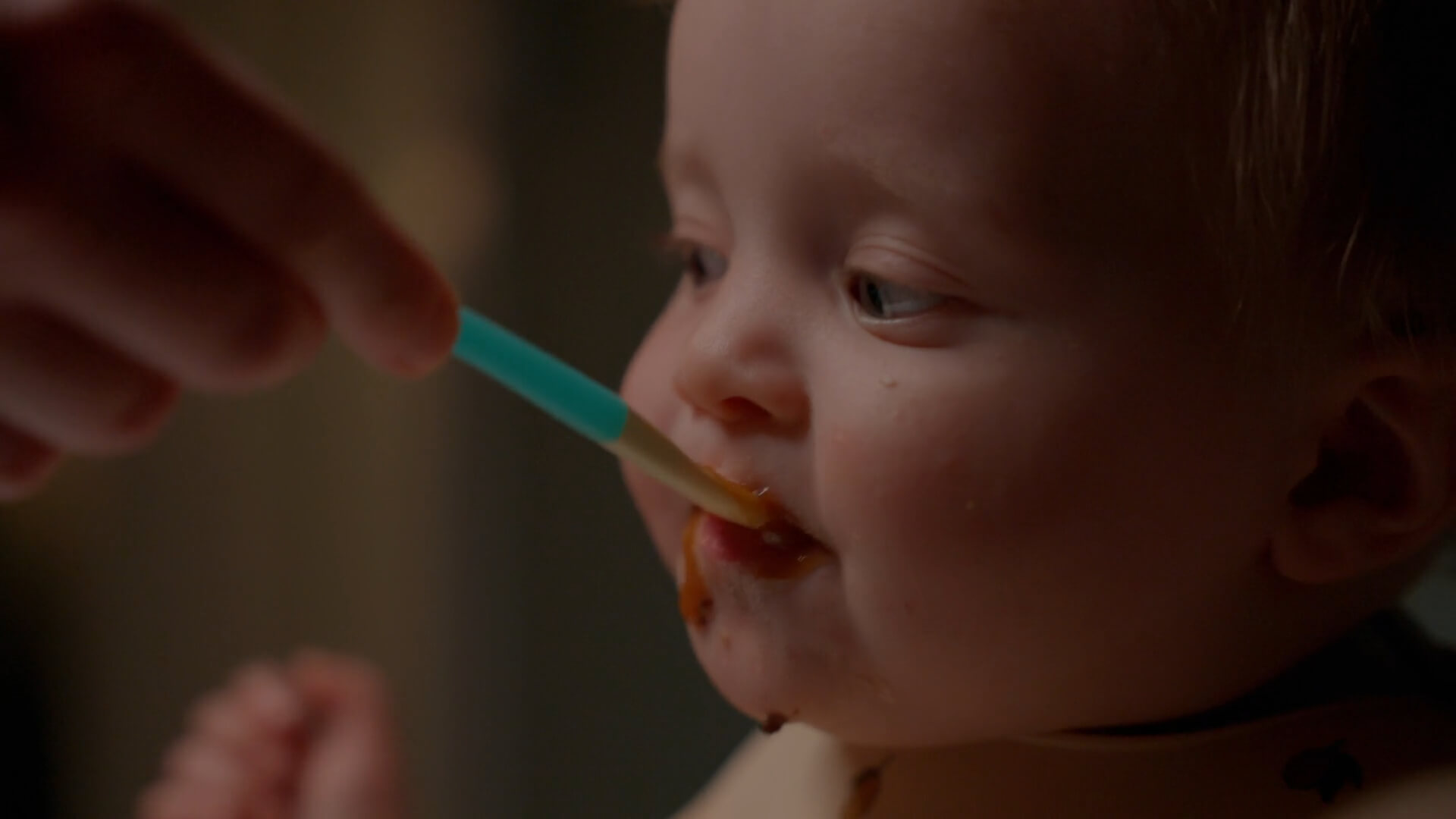
Teething doesn’t drastically change your baby’s nutritional needs, but it can make eating more challenging due to sore gums. Offering the right foods can help keep your baby comfortable and well-nourished during this phase.
- Soft Foods: Offer soft, easily chewable foods to ease gum discomfort.
- Hydration: Ensure your baby stays well-hydrated, especially if drooling excessively.
- Avoid Sugary Foods: Minimize sugary snacks and drinks to prevent early tooth decay.
Important Care Tips:
- Cool Foods: Serve cold, soft foods like yogurt, pureed fruits, or mashed vegetables to soothe gums while providing necessary nutrients.
- Introduce Variety: Offer a balanced diet with various textures, helping your baby practice chewing without causing too much discomfort.
- Stay Hydrated: Encourage water intake to maintain hydration, especially if your baby is drooling more than usual.
The Importance of BPA-Free Teething Toys
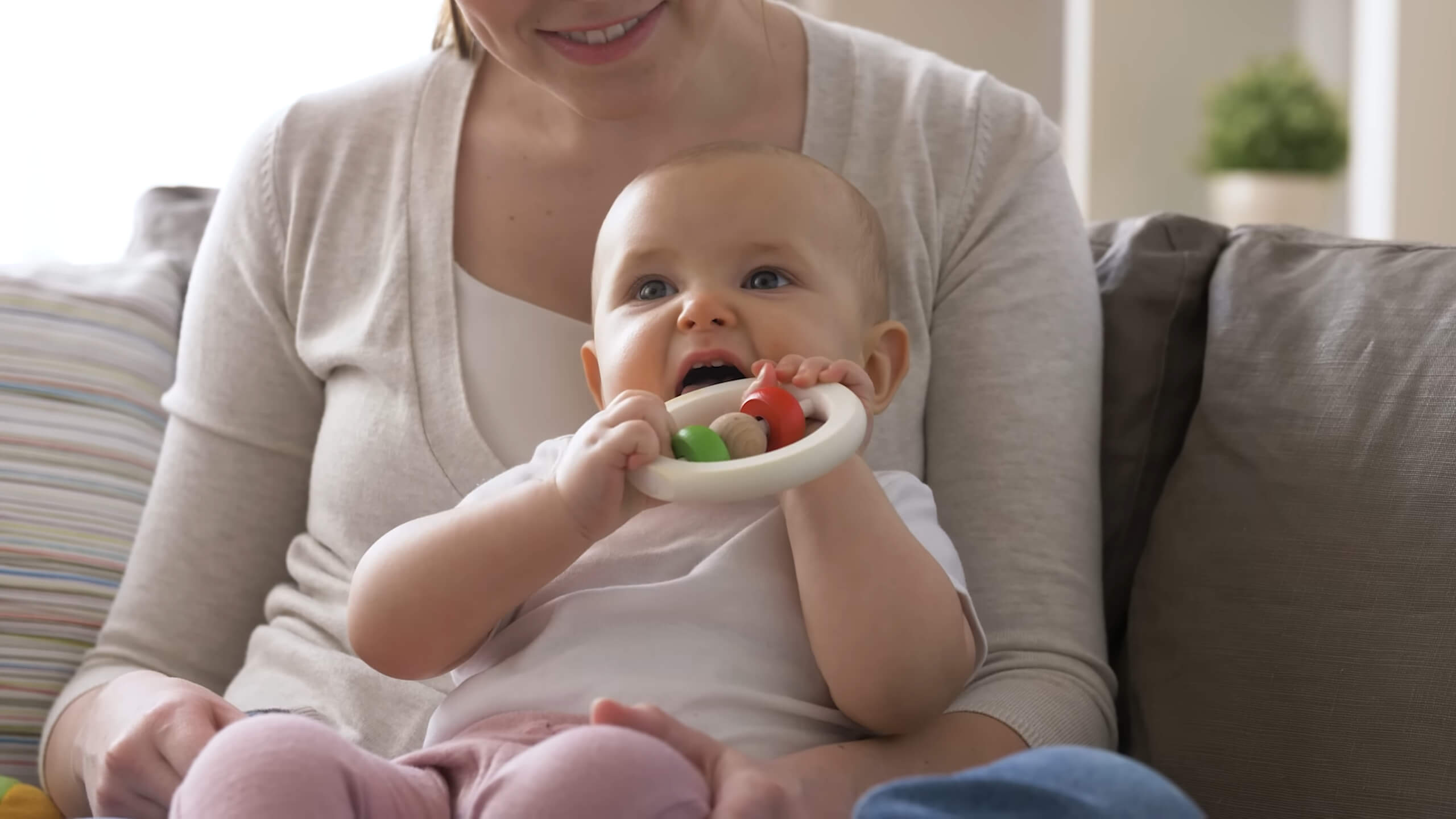
Teething toys are a popular choice for soothing sore gums, but it’s important to choose safe, non-toxic options. BPA-free teething toys are recommended to protect your baby’s health while offering relief.
- BPA-Free: Always opt for teething toys labeled as BPA-free to avoid harmful chemicals.
- Safe Materials: Look for teething toys made from safe materials like silicone or natural rubber.
- Easy to Clean: Choose toys that are easy to sanitize to maintain hygiene.
Important Care Tips
- Inspect Regularly: Regularly check teething toys for any signs of wear and tear to ensure safety.
- Chill for Comfort: Chill BPA-free teething toys in the refrigerator for added comfort, but avoid freezing them as this can make them too hard.
- Variety of Textures: Offer toys with different textures to keep your baby engaged and provide varying relief.
Additional Info
BPA (Bisphenol A) is a chemical commonly found in plastics, and it has been linked to health risks. By choosing BPA-free toys, you ensure that your baby is not exposed to harmful substances while relieving teething discomfort. Cleaning the toys frequently prevents the buildup of bacteria, ensuring a safe teething experience.
Preventing Baby Tooth Decay
Even though baby teeth are temporary, preventing tooth decay early is crucial for your child’s dental health. Establishing good oral care habits from the beginning sets the foundation for healthy adult teeth.
- Start Early: Begin brushing as soon as the first tooth appears.
- Limit Sugary Foods and Drinks: Avoid sugary snacks and beverages that contribute to tooth decay.
- Regular Dental Checkups: Schedule a dental visit by your baby’s first birthday.
Important Care Tips
- Brush Twice Daily: Use a small, soft-bristled toothbrush with a tiny amount of fluoride toothpaste to clean baby teeth.
- No Bottles at Bedtime: Avoid letting your baby fall asleep with a bottle of milk or juice, as this can lead to tooth decay.
- Dental Visits: Early dental visits help monitor the health of your baby’s teeth and catch any potential issues.
Additional Info
Establishing good oral hygiene practices early on, such as brushing twice a day and limiting sugary snacks, will protect baby teeth from decay. Even though baby teeth eventually fall out, healthy primary teeth are essential for proper jaw development and spacing for adult teeth.
Handling Teething-Related Sleep Disturbances
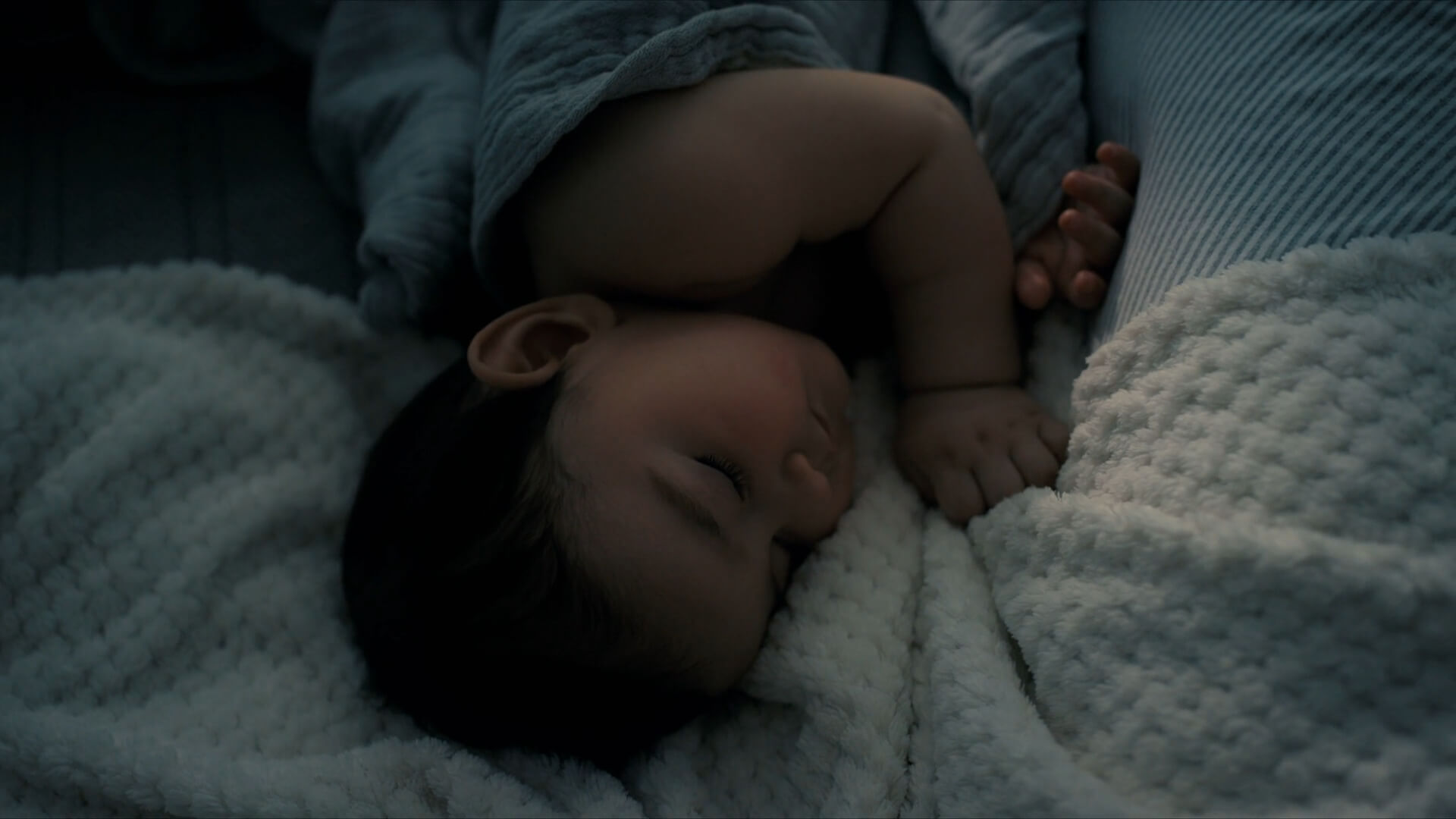
Teething can often disrupt your baby’s sleep, leading to restless nights for both the baby and parents. Managing sleep disturbances during teething requires patience and a few comforting strategies.
- Discomfort: Teething pain can interrupt your baby’s sleep patterns.
- Comfort Methods: Soothing techniques like rocking, cuddling, or using pacifiers can help.
- Routine: A consistent bedtime routine is essential for calming your baby.
Important Care Tips
- Create a Soothing Routine: Establish a calming bedtime routine that includes a warm bath, reading, or gentle rocking to help your baby relax.
- Offer Comfort: Provide extra cuddles, or consider using a pacifier to help soothe your baby through the discomfort.
- Check for Other Causes: Sometimes sleep disturbances might not be due to teething alone, so it’s important to consult your pediatrician if sleep disruptions continue.
Additional Info
While teething discomfort is often blamed for poor sleep, it’s crucial to maintain a consistent bedtime routine. This helps your baby feel secure and calm, reducing the impact of teething on sleep. If sleep issues persist, other factors might be at play, and it’s best to seek advice from a healthcare professional.
Common Teething Myths
There are many misconceptions surrounding teething, and it’s important to separate fact from fiction. Understanding what’s true can help you provide better care for your baby during this phase.
Teething doesn’t cause high fever
A mild temperature might occur, but anything above 101°F is likely unrelated to teething.
Teething doesn’t cause diarrhea or vomiting
These symptoms are usually signs of another illness.
Rashes are typically not teething-related
While drooling may cause skin irritation, rashes are not a direct result of teething.
FAQs
How long does teething pain last for babies?
Teething pain can last for a few days around the time each tooth is emerging. Some babies might experience discomfort for only a day or two, while others might feel teething pain for up to a week before and after the tooth comes through.
Can teething cause a runny nose?
A mild runny nose might occur during teething, but if your baby has persistent nasal congestion or a more significant runny nose, it’s likely due to a cold or other illness. Always check with a pediatrician to rule out other causes.
What can I give my baby to ease teething pain at night?
To help your baby with teething pain at night, you can try offering a chilled teething ring, massaging their gums, or using a pacifier for comfort. If your baby’s discomfort persists, talk to your pediatrician about safe pain relief options like infant acetaminophen.
When should I start brushing my baby’s teeth?
You should start brushing your baby’s teeth as soon as the first tooth appears, which is usually around 6 months. Use a small, soft-bristled toothbrush with a tiny smear of fluoride toothpaste to keep the teeth clean.
Does teething cause babies to stop eating?
Some babies may refuse food or eat less during teething because their gums are sore. Offering softer foods and cold items can help make eating more comfortable. If your baby consistently refuses to eat or drink, consult your pediatrician.
Can teething cause ear pulling?
Babies may pull at their ears during teething because the discomfort in their gums can cause referred pain in the ears. However, ear pulling can also be a sign of an ear infection, so if it continues or your baby shows other symptoms, consult a doctor.
Is it normal for my baby to bite while teething?
Yes, it’s common for babies to bite during teething as it helps relieve pressure on their gums. Providing teething toys or cold washcloths can give your baby something safe to chew on instead.
Last Words
Teething is a significant milestone in your baby’s development, and while it can come with its fair share of challenges, understanding the process can make it easier for both you and your little one. From knowing when each tooth will appear to handle discomfort with safe remedies, being prepared is key.
References
- Khandelwal V, Nayak UA, Nayak PA, Bafna Y. Management of an infant having natal teeth. BMJ Case Rep. 2013 Jun 3;2013:bcr2013010049. doi: 10.1136/bcr-2013-010049. PMID: 23737593; PMCID: PMC3703024.
- Wake, Melissa & Hesketh, Kylie & Lucas, James. (2001). Teething and Tooth Eruption in Infants: A Cohort Study. Pediatrics. 106. 1374-9. 10.1542/peds.106.6.1374.
- Memarpour, M., Soltanimehr, E. & Eskandarian, T. Signs and symptoms associated with primary tooth eruption: a clinical trial of nonpharmacological remedies. BMC Oral Health 15, 88 (2015). https://doi.org/10.1186/s12903-015-0070-2

